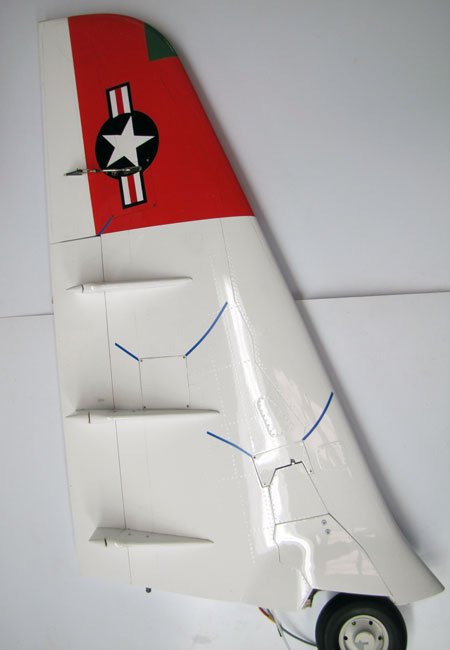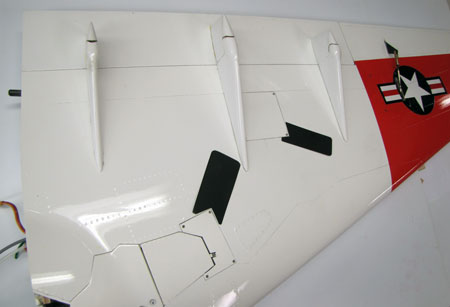|
Wing Stress Cracks
How To
Inspect and Repair
Full size aircraft must undergo airframe and
structural inspections based on time, flight hours, exposure to
extreme air turbulence or hard landings. As our model jets
get larger, more complex, and hopefully endure many flight
hours, we must pay attention to the wear and tear that even
normal use will inflict.
Man carrying aircraft have designed-in removable inspection panels purposely placed to ease the inspection process. Because most of our model jets have the main landing gear mounted in the removable wings and have multiple servo access pockets for flaps, ailerons, leading edge devices, etc., flight loads and landing loads are absorbed primarily by the wings and their fuselage mounting structures. Structural inspections are therefore in order.
You can add some rivet details to the patch,
tape around it and paint it. It will look like it belongs
there. See BVMJets.com/Tips & How
To's for more on these techniques.
To address the causes of this wear and tear
on our jets, we must first recognize that excessive speed and
high "G" loads are the problems. BVM publishes Vne(s)
(Velocity to Never Exceed) for all of our jets. It is
posted on the front page of the model Assembly and Operating
Manual after we have thoroughly flight tested our products at
that speed.
If your model jet does not have a published Vne, I would suggest that large scale jets be limited to 140 mph. If you are flying them in high wind and gusty conditions, reduce the speed to 120 mph maximum.
There are several speed detecting / limiting
devices recently available. Take advantage of this new
technology.
Part of holding an A.M.A. "Turbine Waiver" is
assuming the extra responsibility for safe operations of a high
performance turbine powered model aircraft.
Contact Us |

